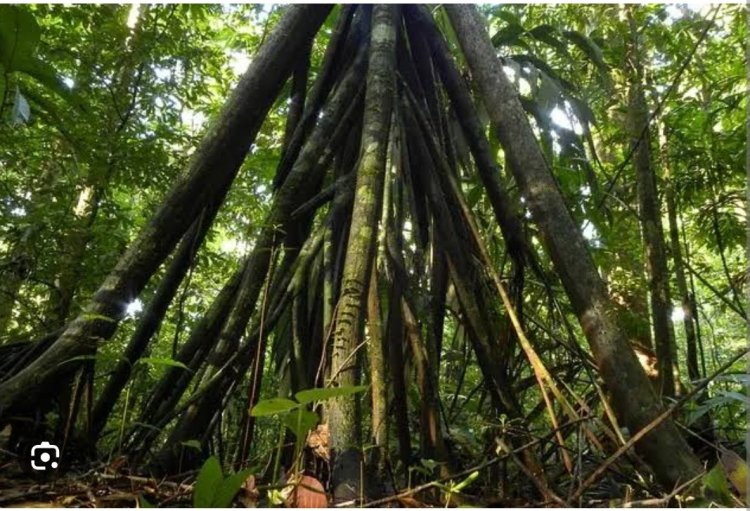The walking palm
The idea of a tree that can walk sounds like something out of fantasy novel, doesn't it.

Walking palm-(Socratea exorrhizo)
A Tree That Slowly Migrate.
Introduction
In the dense, competitive understory of the rainforests of Central and South America stands a botanical curiosity that seems to defy the very nature of trees. The **Walking Palm** (*Socratea exorrhiza*), with its striking, stilt-like roots, has long been the subject of awe and debate, earning its name from the remarkable claim that it can slowly "walk" to find better light. While the process is far from a conscious journey, this unique species offers a fascinating glimpse into the ingenious ways plants have adapted to survive in a dynamic and challenging environment. This report explores the unique anatomy, the mechanism behind its alleged migration, the scientific debate surrounding the phenomenon, and its vital role in the rainforest ecosystem.
The Anatomy of a Walker: (The Stilt-Root System)
The most distinguishing feature of the Walking Palm is its peculiar root structure. Unlike a typical tree with a buried root network and a single, solid base, the Walking Palm's roots emerge from its trunk several feet above the ground. These roots fan out from the base, forming a cone-like structure that supports the tree like the legs of a tripod. The tree's trunk is elevated, with the older, original roots often rotting away and leaving the tree propped up entirely by this new, mobile foundation.
This stilt-root system serves several crucial purposes. First and foremost, it provides remarkable stability in the soft, often waterlogged soils of the rainforest floor. It also helps the tree grow taller faster, bypassing some of the challenges of the dense understory and reaching for precious sunlight.
The "Walking" Process Explained
The popular notion that the Walking Palm can move is rooted in its ability to grow new aerial roots. The "walking" is not a fast, overnight event but a slow, biological response to environmental pressures. If a nearby tree falls, or if a new sapling grows and blocks its light, the Walking Palm will respond by growing new, stronger roots on the side facing the newly available sunlight or better soil.
Over time, these new roots will anchor the tree in its desired direction. Simultaneously, the older roots on the shaded or less fertile side of the tree will begin to die and rot away. As the new roots take hold and the old ones decay, the tree's center of gravity shifts, causing it to lean and, over the course of several months or even a year, slowly "step" in the new direction. This is not a fast or voluntary process; it is a passive, and incredibly slow, adaptation driven by its physiological need to survive.
The Scientific Debate and Reality
While the anecdotal evidence of a walking tree is captivating, the extent of its movement has been a topic of debate among scientists. Some botanists contend that the "walking" is often exaggerated. They argue that the primary function of the stilt roots is simply to provide stability and access to nutrients in poor soil, with any lateral movement being a secondary, and likely rare, consequence of this growth strategy. The tree’s inclination to grow new roots in a specific direction is more about anchoring itself securely and less about actively migrating across the forest floor. Regardless of the magnitude of its movement, the tree's unique root system is a clear and remarkable evolutionary adaptation to the challenges of its environment.
Ecological Significance
Beyond its walking ability, the Walking Palm is an integral part of its rainforest habitat. Its elevated stilt roots provide unique microhabitats for a variety of insects and small animals. The tree itself serves as a source of food; its palm heart is a delicacy, and its fruits are eaten by animals. By thriving in the understory and reaching for the canopy, the Walking Palm helps to maintain the incredible biodiversity and complex structure of the rainforest.
Conclusion
The Walking Palm stands as a powerful testament to the ingenuity of nature. Its stilt roots, whether they enable it to "walk" or simply to stand tall in difficult conditions, are a perfect evolutionary answer to the challenges of its environment. Far from being a mythical creature, the *Socratea exorrhiza* is a living, breathing example of a plant that has found a truly unique way to adapt and thrive. It reminds us that survival in the natural world can take many forms, and that even the most sedentary of life forms can exhibit a dynamic and astonishing capacity for change.










